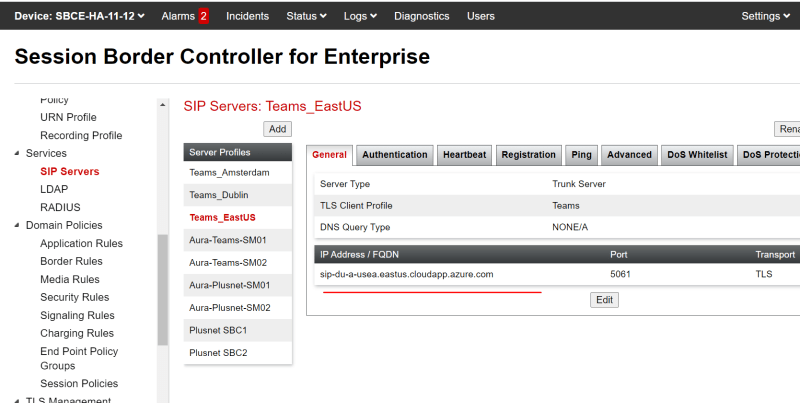AbdulSajid
Systems Engineer
Hi,
I have an issue where the Teams Direct Routing solution was implemented. Microsoft recommends using A-Record FQDN as server address: sip-all.pstnhub.mircosoft.com
This address resolves 9 IP addresses in public DNS (let´s name it Server A(lpha) to I(daho)).
In call flows, I could observe that sbce starts sending messages to different server, even inside dialogs.
expectation is that SBC engine shall keep dialogues from one session on the same server as long the server is available
(which it is in the cases i´ve seen Server is continuously answering SIP OPTIONS)
So the former Microsoft peer, where the dialog started, continues to be available, but SBC decides to send further request to another server.
Let me reformulate the question: why is SBC going to another, and then another server as long the initial server, where the sessions started,

Is still available ?
I have an issue where the Teams Direct Routing solution was implemented. Microsoft recommends using A-Record FQDN as server address: sip-all.pstnhub.mircosoft.com
This address resolves 9 IP addresses in public DNS (let´s name it Server A(lpha) to I(daho)).
In call flows, I could observe that sbce starts sending messages to different server, even inside dialogs.
expectation is that SBC engine shall keep dialogues from one session on the same server as long the server is available
(which it is in the cases i´ve seen Server is continuously answering SIP OPTIONS)
So the former Microsoft peer, where the dialog started, continues to be available, but SBC decides to send further request to another server.
Let me reformulate the question: why is SBC going to another, and then another server as long the initial server, where the sessions started,

Is still available ?
